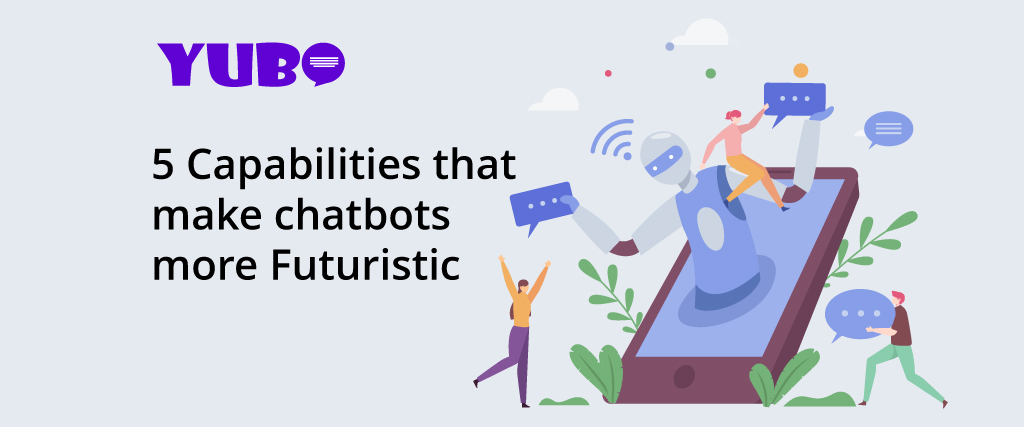Chatbots Futuristic: Chatbots are on a rise and we all want to make maximum use of this opportunity. Many companies are using chatbots in their sales, marketing, and customer support.
Currently, the most popular chatbot platform is Facebook Messenger, which has over 100,000 chatbots embedded into the messenger.
Also, the majority of chatbots that individual encounters are pretty basic and can only reply to a set of questions. These bots cannot be termed as “smart” as they don’t have any understanding of customers’ intent.
There are various things that can be done to make them smart and aware of the conversation. We have developed a chatbot that is quite smart and looks like a thing for the future. You can converse with it in any language of your choice and comfort.
It uses all the technologies I’m listing in the blog. Chatbots Futuristic And these are just the tips of the iceberg as many more features are integrated into it.
The name of our chatbot is “HelloYubo”. You should check out the bot and let us know your opinion about it. Back to the topic, In this article, I’m listing 5 key things you might want to integrate to make your chatbots more effective, useful, and futuristic.
- Natural Language Processing
- Natural Language Understanding
- Contextual Awareness
- Capability to Anticipate Customer Needs
- Sentiment Analysis
1. Natural Language Processing (NLP) – Chatbots Futuristic
Natural Language Processing is one of the most important factors in an AI-driven chatbot. With the help of NLP, chatbots can process the received text: interpret, infer, and determine what was meant (written or said) and then define a series of appropriate actions.
NLP enables the chatbot the ability to converse with the user in natural language thus making the conversation more human-like and interesting. Not only this, it is also useful for understanding the intents of the user.
The process of NLP proceeds in five main steps:
- Lexical analysis
- Syntactic analysis (parsing)
- Semantic analysis
- Discourse integration
- Pragmatic analysis
The first step includes words structure identification and analysis; it divides the text into chapters, sentences, phrases, and words.
2. Natural Language Understanding
With natural language understanding, developers can analyze text such as categories, emotion, entities, keywords, metadata, relations, and sentiment.
Web developer kits like IBM Watson’s chatbot kit allows for easy use of Natural Language Processing. NLU first maps the input text for tangible data and then analyze various aspects of it.
NLU is used for handling and converting the input text from the user into tangible data which can then be processed to answer to the user.
3. Contextual Awareness – Chatbots Futuristic
Chatbots of the future should have a contextual understanding of the text in order to assist the user in the best possible way. This contextual awareness leads to intelligence over time, by providing tons of data over a period of a long time.
Chatbots of the future relies on effective contextual intelligence to create more meaningful relationships with customers. From banking to health services, each and every industry have unique requirements from contextual chatbots that work with large data sets.
4. Anticipate Customer Needs
Chatbots of the future will have the ability and access to the client’s data consistently. Users will no longer have to answer the series of long questionnaires in order to start their conversation with the chatbots.
Chatbots will already have the data processed and know much more about the user. For example, chatbots will have the knowledge of likes and dislikes of the user, browser history, social media data, past buys, and so forth Clients will in general go to chatbots for basic inquiries, item suggestions, or to rapidly buy or book something.
5. Sentiment Analysis
Sentiment analysis incorporates parsing out explicit objective expressions and the sentiment of the entire text.
Sentiment analysis takes a specific string from the text composed by the user for the bot and relegates it to a rating ranging between 0-4. Chatbots use AI, NLP, and stats to recognize and separate it from the text.
Sentiment analysis works off of Support Vector Machines (SVM) which is a kind of algorithm that performs a pattern recognition to examine the tone of the client. SVM is for the most part great at combining assorted data sources.
Indeed, even significant banks like JPMorgan Chase are planning ahead with their utilization of chatbots. Chatbots of the future will have the insight to adequately arrange and the capacity to reason in a human-like manner.
Facebook recently dispatched its own Facebook courier chatbot called Assistant M, just as an open-source engineer toolbox for bots.
Perhaps the most eminent deliveries inside the toolboxes were the capacity for bots to haggle through a component named “dialog rollouts,” in which bots could think ahead and choose the best techniques for an arrangement with people or different bots.







